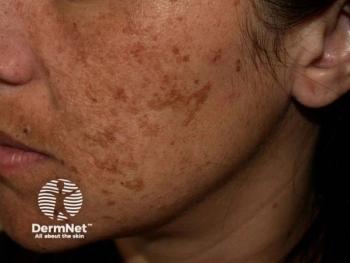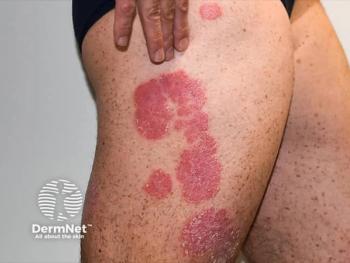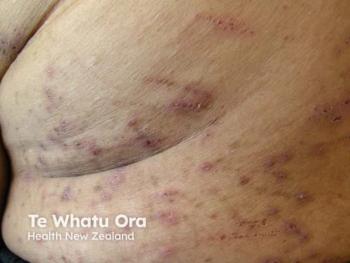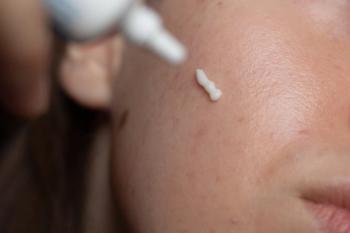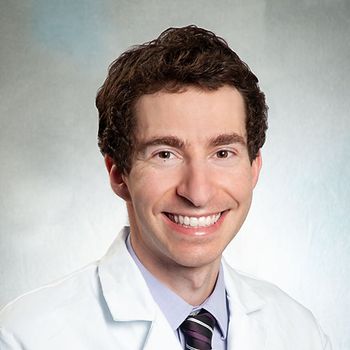
The Future of laBCC Treatment with Vishal Patel, MD, FAAD, FACMS
Treatment decisions are increasingly guided by patient values, preferences, and quality-of-life considerations.
In an insightful interview with Dermatology Times, Vishal Patel, MD, FAAD, FACMS, a nationally recognized cutaneous oncologist and Mohs surgeon, shared his perspectives on the evolving landscape of advanced basal cell carcinoma treatment. Based in Washington, DC, at the George Washington University School of Medicine, Patel serves as Director of Dermatologic Surgery and leads the Cutaneous Oncology program at the GW Cancer Center. Drawing from his extensive experience treating complex skin cancers, he discusses the expanding role of hedgehog pathway inhibitors, the potential for combination therapies, and the importance of individualized, patient-centered care in a field that’s rapidly advancing.
Q&A
Dermatology Times: What do you find are the primary challenges in treating locally advanced basal cell carcinoma?
Patel: Well, first and foremost, locally advanced basal cell carcinoma can mean a lot of different things. That’s the first challenge—how do we define it? We’re often taught to think of it as those big, bad tumors, and certainly, those can be very challenging to treat, especially in the head and neck region. A lot of patients tend to hide these tumors, and they can occur anywhere on the body, growing to a size that's difficult to manage with our usual therapies.
But it’s not only about large tumors. In the US, we tend to stage tumors—labeling them as locally advanced, recurrent, or surgically amenable. In Europe, where I was just last week at the European Academy of Dermato-Oncology, they’ve redefined basal cell carcinoma into categories of “easy to treat” and “difficult to treat.” You can have large, easy-to-treat tumors or small, difficult-to-treat ones, depending on their location and other factors.
I’m increasingly challenged by smaller lesions that are hard to treat. I may be able to remove them surgically, but I pause and ask myself: is this the best option for the patient? In some cases, systemic therapy might make more sense.
We're also seeing a growing population of older patients—baby boomers now reaching retirement age—and, increasingly, younger patients. That’s another important factor. I'm seeing more basal cell carcinoma in people in their 20s, and even teens. Just the other day, I saw a 19-year-old patient—not someone with a genetic disorder, just red hair, light skin, lots of sun exposure—with one small lesion. It was technically easy to treat, but psychologically difficult for the patient to process.
So, when we talk about basal cell carcinoma, it’s a wide spectrum. There’s depth and breadth in how it presents, and there are multiple clinical, emotional, and psychosocial factors that can make these cases truly challenging—for both clinicians and patients.
DT: How has the treatment landscape evolved in recent years?
Patel: The gold standard treatment for basal cell carcinoma—at least in the US—is surgical therapy. It’s great that we have both traditional excision and Mohs micrographic surgery, which offer reliable outcomes. Surgery is our benchmark—the barometer we measure everything else against.
But surgery isn’t always appropriate for every patient, and that can mean a lot of different things. We’re exploring non-surgical treatments—lasers, light therapies—and I’m increasingly considering systemic therapies, especially hedgehog pathway inhibitors, which are highly effective.
Now that we have 10 to 15 years of experience with these drugs, I’m asking: where do they fit in my treatment toolbox? How can I use them for the wide range of patient presentations I’m seeing? It’s especially relevant now that we also have immunotherapy approved for basal cell carcinoma. That gives us options on the back end, so I can think about moving treatments like hedgehog inhibitors earlier in the treatment plan.
DT: How does sonidegib work to treat laBCC, and what makes it unique compared to other treatment options?
Patel: Let me first clarify: when we think about sonidegib, we need to remember it's approved for patients with locally advanced basal cell carcinoma who aren’t candidates for surgery or curative radiation. And I’ve already talked a bit about what “locally advanced” can mean—that flexibility allows for shared decision-making between physician and patient, considering comorbidities, psychosocial issues, or family concerns.
I rely on sonidegib to help fill the gaps in those nuanced cases. When I have a patient who qualifies as “locally advanced,” and I’m not thinking surgery, I reach for sonidegib as my systemic option. It has a unique pharmacokinetic profile—it's rapidly absorbed, reaches the bloodstream within 2 to 4 hours, and achieves steady state around 4 months. It distributes well into tissue, and in the pivotal data, patients could pause treatment for up to 21 days due to adverse effects and still maintain effective drug levels.
That reliability gives me confidence. Most adverse effects are mild to moderate—about 95%—and I can work with patients to adjust dosing as needed, again using shared decision-making. What makes sonidegib stand out to me is that it’s really a second-generation hedgehog pathway inhibitor—newer, more refined, and better tolerated.
DT: How do you weigh the risks and benefits of systemic therapy versus radiation or other alternatives?
Patel: That’s really the challenge in the doctor–patient relationship. First and foremost, I start by understanding what the patient’s values are. If someone says, “It’s paramount to me to know the whole cancer is out,” then surgery is the only option—we can’t guarantee that with anything else. But honestly, that’s rarely the case.
At that point, I try to reset the conversation. I tell them: this is a chronic disease—in many ways like diabetes. We’re managing a slow-growing lesion to avoid long-term complications. Just like you want to prevent neuropathy or kidney failure in diabetes, we want to prevent this from invading deeper tissue, ulcerating, bleeding, or causing functional or cosmetic issues.
Yes, we’d love to cure it—and with modified RECIST criteria, we do see fairly high complete response rates in trials (20 to 26%). But that’s not the primary reason I’m offering medication. I ask: what are your goals? If your goal is absolute cure, that might mean a large and morbid surgery—say, a forehead flap for a small lesion on the nose—or removing a substantial portion of tissue for a locally advanced lesion.
Radiation is another option. It’s non-surgical and can be effective, but the more complex the location or histology, the lower our confidence in cure. So, I tend to save radiation as a salvage treatment, sometimes in combination with immunotherapy, if other options don’t work.
If a patient doesn’t want surgery, the first option I consider is systemics. Sure, there are other non-surgical treatments with lower cure rates, but sonidegib gives us flexibility. I explain that it’s not chemotherapy. It’s a targeted therapy, a hedgehog pathway inhibitor that blocks the smoothened protein in cancer cells. That helps patients understand it’s a smart, focused treatment.
That’s the benefit. We’ve bought time, and we’re treating this like the chronic condition it is. Just like managing diabetes, we’ll have a shared decision-making process as we go.
I give them a starter pack and say, “Go ahead, start today.” I’m confident I’ll see them in three months. I don’t need to check in before then because it’s a reliable medication. And when they come back, that’s usually the time when any adverse effects might start showing—so we can assess and adjust if needed.
DT: What advancements do you foresee in the treatment of laBCC, and how might they change patient outcomes in the next 5 years?
Patel: I'm so excited about how the field has evolved—especially in basal cell carcinoma. We've seen huge advances in melanoma and squamous cell carcinoma, and now those innovations are starting to apply to basal cell too. We're rethinking how hedgehog pathway inhibitors fit into the landscape, and we’re also broadening our definition of “locally advanced”—moving beyond traditional clinical trial parameters to reflect the realities of what we actually see in patients.
What excites me even more is what’s next. If we can already give patients oral hedgehog pathway inhibitors, then the question becomes: what else can we combine with them to push toward even better outcomes—like boosting complete response rates to 70 or 80 percent? That would be remarkable.
And as we gain more experience and collect more rigorous data, we’re starting to ask: can we evaluate alternative dosing regimens more stringently—trial-style—so we can minimize toxicity without compromising efficacy? I think that’s exactly where the next 3 to 5 years are headed.
As with any new treatment or technology, once we get more comfortable, we start pushing the envelope—using it earlier in the disease course or in more complex cases. And as a surgeon at heart, I’ll say this: if I can avoid cutting someone, I’d like to. But if surgery offers the best path to cure, I’ll do it.
Sonidegib, marketed as Odomzo, carries a boxed warning due to its potential to cause embryo-fetal death or severe birth defects when administered to pregnant women. Health care providers are advised to verify pregnancy status before initiating treatment. Females of reproductive potential should use effective contraception during therapy and for at least 20 months after the last dose. Males with female partners of reproductive potential are advised to use condoms during treatment and for at least 8 months after the final dose. Additionally, patients are advised not to donate blood or blood products during therapy and for at least 20 months following the last dose.
Reference
What you might expect when taking ODOMZO capsules. Odomzo – Sun Pharma. Accessed April 9, 2025.
Newsletter
Like what you’re reading? Subscribe to Dermatology Times for weekly updates on therapies, innovations, and real-world practice tips.

